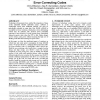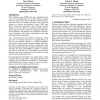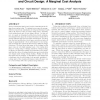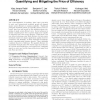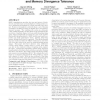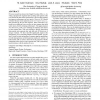ISCA
2010
IEEE
13 years 9 months ago
2010
IEEE
Technology advancements have enabled the integration of large on-die embedded DRAM (eDRAM) caches. eDRAM is significantly denser than traditional SRAMs, but must be periodically r...
ISCA
2010
IEEE
13 years 9 months ago
2010
IEEE
Chip Multiprocessors (CMPs) are now commodity hardware, but commoditization of parallel software remains elusive. In the near term, the current trend of increased coreper-socket c...
ISCA
2010
IEEE
13 years 10 months ago
2010
IEEE
Given the multicore microprocessor revolution, we argue that the architecture research community needs a dramatic increase in simulation capacity. We believe FPGA Architecture Mod...
ISCA
2010
IEEE
13 years 10 months ago
2010
IEEE
Power consumption has become a major constraint in the design of processors today. To optimize a processor for energyefficiency requires an examination of energy-performance trade...
ISCA
2010
IEEE
13 years 10 months ago
2010
IEEE
Recent advances in computing have led to an explosion in the amount of data being generated. Processing the ever-growing data in a timely manner has made throughput computing an i...
ISCA
2010
IEEE
13 years 10 months ago
2010
IEEE
Phase change memory (PCM) is an emerging memory technology for future computing systems. Compared to other non-volatile memory alternatives, PCM is more matured to production, and...
ISCA
2010
IEEE
13 years 10 months ago
2010
IEEE
ISCA
2010
IEEE
13 years 10 months ago
2010
IEEE
SIMD organizations amortize the area and power of fetch, decode, and issue logic across multiple processing units in order to maximize throughput for a given area and power budget...
ISCA
2010
IEEE
13 years 10 months ago
2010
IEEE
Next generation tiled microarchitectures are going to be limited by off-chip misses and by on-chip network usage. Furthermore, these platforms will run an heterogeneous mix of ap...
ISCA
2010
IEEE
13 years 10 months ago
2010
IEEE
Previous research has shown that Staged Execution (SE), i.e., dividing a program into segments and executing each segment at the core that has the data and/or functionality to bes...
